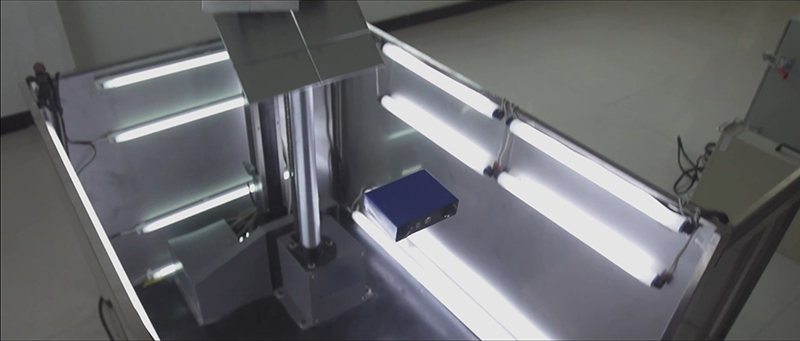Lithium Battery Safety Testing by Amensolar
Lithium batteries, with their high energy density and long lifespan, are widely used in mobile phones, electric vehicles, energy storage systems, and other fields. However, if not properly designed or used, lithium batteries may pose risks such as overheating, fire, and even explosion. Therefore, safety testing has become a crucial part of the research, development, production, and application of lithium batteries.
I. The Importance of Lithium Battery Safety Testing
The safety hazards of lithium batteries mainly come from the following aspects:
Thermal runaway : Chain reactions triggered by high temperatures
Mechanical damage: Short circuits caused by squeezing and piercing
Electrical abuse : Overcharging, over-discharging, and short circuits
Extreme environmental conditions : High temperatures, low temperatures, and humidity
Safety testing simulates these extreme scenarios to verify the reliability of batteries and ensure that they will not cause danger under normal use or accidental conditions.
II. Core Projects of Lithium Battery Safety Testing
(i) Mechanical Safety Testing—Simulating Physical Impact
Vibration testing : Simulates vibration during transportation or use (such as in-vehicle batteries) to check for leakage and structural damage.
Shock testing: Applies high acceleration shock (such as 50G) to verify whether the battery will rupture or catch fire.

Compression testing: Applies pressure using a hydraulic machine (such as 13kN, equivalent to about 1.3 tons) to observe whether thermal runaway occurs.
Needle penetration testing: Pierces the battery with a steel needle to simulate internal short circuits and detect whether fire or explosion occurs (a strict test that some standards have canceled, but companies may still adopt).
Drop testing: Drops the battery from a height of 1–2 meters to check its appearance and functionality.

(ii) Electrical Safety Testing—Preventing Overcharging and Short Circuits
Overcharge testing : Charges the battery to more than 1.5 times the rated voltage (for example, charges a 4.2V battery to 6V) to verify the effectiveness of the protection circuit.
Over-discharge testing: Discharges the battery below the cut-off voltage (for example, discharges a 2.5V battery to 1.5V) to assess whether leakage or damage occurs.
Short-circuit testing :
External short circuit :Directly short-circuits the positive and negative electrodes to monitor temperature rise and whether fire occurs.
Internal short circuit : Simulates internal battery failure through needle penetration or forced internal short circuit.
Reverse charging testing: Simulates reverse connection of the battery to test whether the protection circuit can prevent danger.
(iii) Environmental Safety Testing—Reliability Under Extreme Conditions
High-temperature testing: Stores or operates the battery at 85°C–130°C to observe whether it expands or leaks.
Low-temperature testing: Charges and discharges the battery at -40°C to evaluate whether its performance drops significantly.
Temperature cycling testing: Alternates between -40°C and 85°C to test the battery’s weather resistance.
Humidity testing: Tests insulation and corrosion under high-temperature and high-humidity conditions (such as 95% RH at 85°C).

(iv) Other Specialized Testing
Salt spray testing : Simulates coastal or highly corrosive environments to check the corrosion resistance of the battery’s casing and interfaces.
Low-pressure testing : Simulates high-altitude environments (such as 11.6kPa) to verify whether the battery expands or leaks.
EMC testing : Tests the ability of the battery management system (BMS) to resist electromagnetic interference to prevent the misfiring of protection mechanisms.
III. Practical Significance of Safety Testing
1. Ensuring user safety : Prevents battery fires and explosions.
2. Meeting regulatory requirements: Gaining certification is necessary for entering international the market.
3. Optimizing battery design : Improves materials, structure, and BMS systems based on test data.
4. Enhancing brand reputation: Products that undergo strict testing are more trusted by consumers and partners.
IV. Summary
Lithium battery safety testing is a core part of ensuring product reliability, involving verification in mechanical, electrical, and environmental aspects. Amensolar Lithium Batteries have excelled in this area, passing many strict test items, including vibration, shock, compression, needle penetration, and drop tests in mechanical testing safety; overcharge, over-discharge, short-circuit, and reverse charging tests in electrical safety testing; high- and low-temperature, temperature cycling, and humidity tests in environmental safety testing; and salt spray, low-pressure, and EMC tests in other specialized testing. These tests have comprehensively verified the safety and reliability of the batteries.
In terms of certification, Amensolar Lithium Batteries have also achieved a lot, obtaining international authoritative certifications such as UL 1973, IEC62619, IEC 61000, CE, and UN38.3. These certifications are strong proof of the high quality of their products. With these comprehensive and strict tests and certifications, the quality of Amensolar Lithium Batteries is fully guaranteed, and users can use them with confidence. As technology progresses and testing standards continue to be upgraded, Amensolar Lithium Battery companies need to keep optimizing battery design to meet higher safety requirements. Consumers, manufacturers, and regulatory authorities should all pay attention to battery safety to jointly promote the healthy development of the industry.

 N3H-X16US 16KW | Split Phase |...
N3H-X16US 16KW | Split Phase |...  N3H-X12US 12KW | Split Phase |...
N3H-X12US 12KW | Split Phase |...  N3H-X10US 10KW | Split Phase |...
N3H-X10US 10KW | Split Phase |...  N3H-X8US 8KW | Split Phase | ...
N3H-X8US 8KW | Split Phase | ...  N3H-X5US 5KW | Split Phase | ...
N3H-X5US 5KW | Split Phase | ...  N1F-A3US 3KW | Split Phase | ...
N1F-A3US 3KW | Split Phase | ...  N1F-A12US 12KW | Split Phase |...
N1F-A12US 12KW | Split Phase |...  N1F-A6.2P 6.2KW | Single Phase...
N1F-A6.2P 6.2KW | Single Phase...  N1F-A6.2E 6.2KW | Single Phase...
N1F-A6.2E 6.2KW | Single Phase...  AMF16000 51.2V | 16KWH | Floo...
AMF16000 51.2V | 16KWH | Floo...  AMW10240 51.2V | 10.24KWH | W...
AMW10240 51.2V | 10.24KWH | W...  LFP 16kWh / LV 51.2V | 16KWH | Floo...
LFP 16kWh / LV 51.2V | 16KWH | Floo...  S52300 51.2V | 16KWH | Stac...
S52300 51.2V | 16KWH | Stac...  S52200 51.2V | 10.24KWH | S...
S52200 51.2V | 10.24KWH | S...  AML12-200 12.8V Series LifePo4...
AML12-200 12.8V Series LifePo4...  AML12-100 12.8V Series LifePo4...
AML12-100 12.8V Series LifePo4...  AML12-120 12.8V Series LifePo4...
AML12-120 12.8V Series LifePo4...  AML12-150 12.8V Series LifePo4...
AML12-150 12.8V Series LifePo4... 